Project Flash: Enhancing Azure Virtual Machine Availability Monitoring
Written by Mark Russinovich, this blog offers an in-depth look at Project Flash—a cross-division Azure initiative—outlining its latest advancements in virtual machine availability monitoring, new integrations, and real-world benefits for teams managing Azure infrastructure.
Project Flash: Enhancing Azure Virtual Machine Availability Monitoring
By Mark Russinovich
Flash is Microsoft’s latest initiative enabling rapid detection of issues originating from the Azure platform, empowering teams to respond quickly to infrastructure-related disruptions. In this update, Mark Russinovich, CTO, Deputy CISO, and Technical Fellow at Microsoft Azure, introduces new advancements in Project Flash, with insights contributed by Yingqi (Halley) Ding, Technical Program Manager, Azure Core Compute team.
Overview of Project Flash
Project Flash is a cross-division effort at Microsoft to provide precise telemetry, real-time alerts, and scalable monitoring within a unified experience, specifically targeting the diverse observability needs for virtual machine (VM) availability on Azure.
Flash addresses both Azure platform-level and user-level monitoring challenges by:
- Detecting issues such as VM reboots, restarts, application freezes (e.g., due to network driver updates), or planned/unexpected host OS updates.
- Offering trend analysis, customizable alerts for debugging and tracking availability.
- Monitoring VM and resource health at scale with custom dashboards.
- Delivering automated root cause analyses (RCAs) that specify affected VMs, issue causation, durations, and resolutions.
- Proactively alerting on critical events (e.g., degraded nodes, platform-initiated healing, hardware-triggered reboots) to enable timely responses and reduced user impact.
- Allowing dynamic recovery policy adjustments for evolving business priorities.
The solutions stemming from Project Flash support Service-Level Agreement adherence and have been widely adopted in sectors such as e-commerce, gaming, finance, and hedge funds.
Customer Perspective
At BlackRock, VM reliability is critical … With Project Flash, we receive a resource health event integrated into our alerting processes the moment an underlying node in Azure infrastructure is marked unallocatable … This ability to predictively avoid abrupt VM failures has reduced our VM interruption rate and improved the overall reliability of our investment platform.
— Eli Hamburger, Head of Infrastructure Hosting, BlackRock
The Flash Monitoring Suite
Project Flash has matured into a robust framework supporting organizations from small deployments to massive cloud estates. Key monitoring solutions include:
| Solution | Description |
|---|---|
| Azure Resource Graph | Aggregate telemetry and conduct historical investigations across all VMs at scale. |
| Event Grid system topic | Trigger fast mitigations with alerts delivered within seconds of resource availability changes. |
| Azure Monitor – Metrics | Track trends and configure metric-based alerts with an out-of-the-box VM availability metric. |
| Resource Health | Quickly access per-resource health status and 30-day health history in the Azure Portal. |
 Figure 1: Flash endpoints
Figure 1: Flash endpoints
What’s New in Project Flash
1. User vs Platform Activity Dimension for VM Availability Metrics (Public Preview)
A top customer request—user-friendly, near real-time monitoring of compute availability—resulted in the introduction of a Context dimension to the VM availability metric within Azure Monitor. This dimension enables teams to distinguish if a VM disruption was caused by Azure-initiated (Platform), user-orchestrated (Customer), or unknown activity, supporting:
- Alert rules filtering by disruption context
- Faster, more accurate diagnosis and mitigation
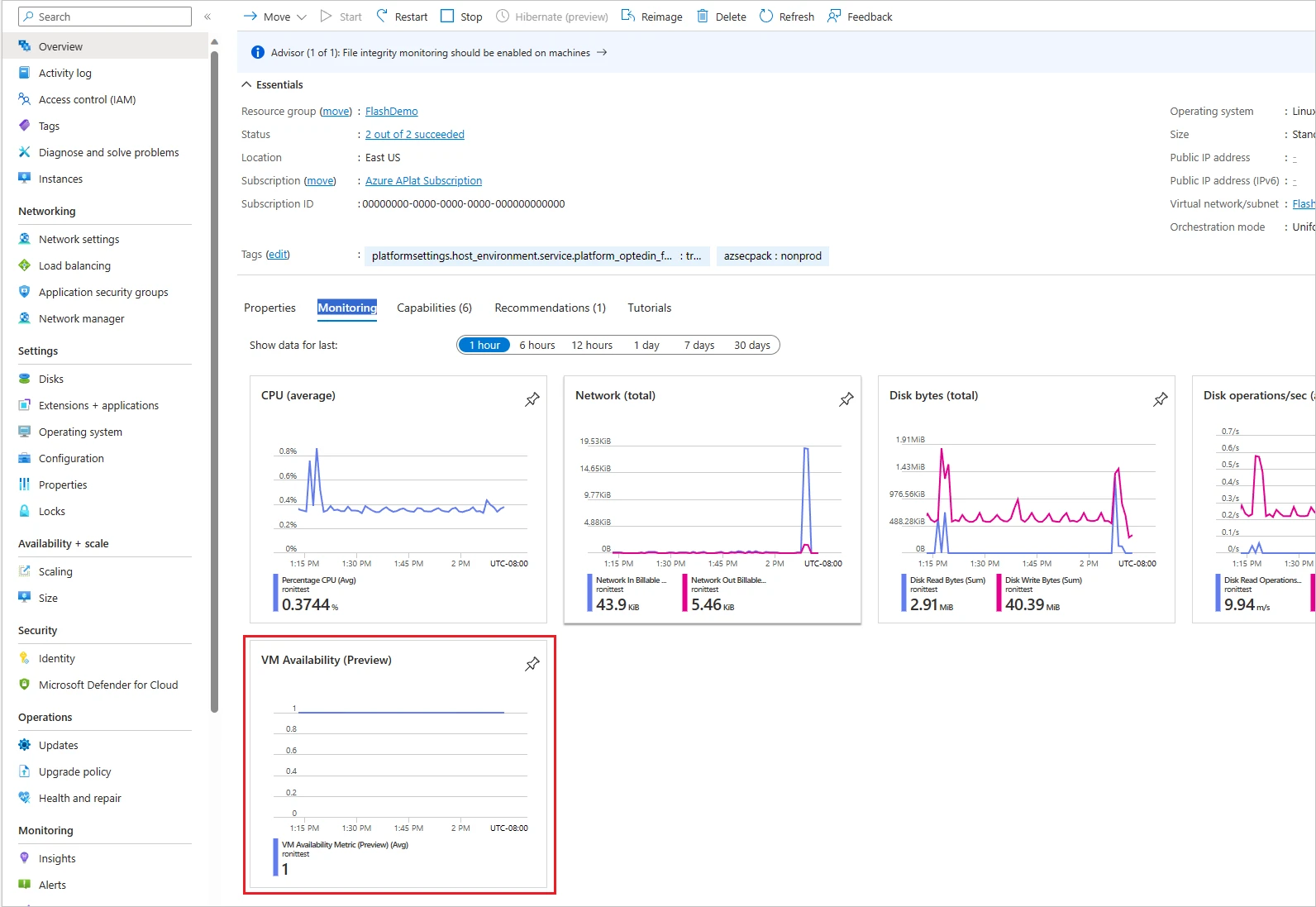 Figure 2: VM availability metric
Figure 2: VM availability metric
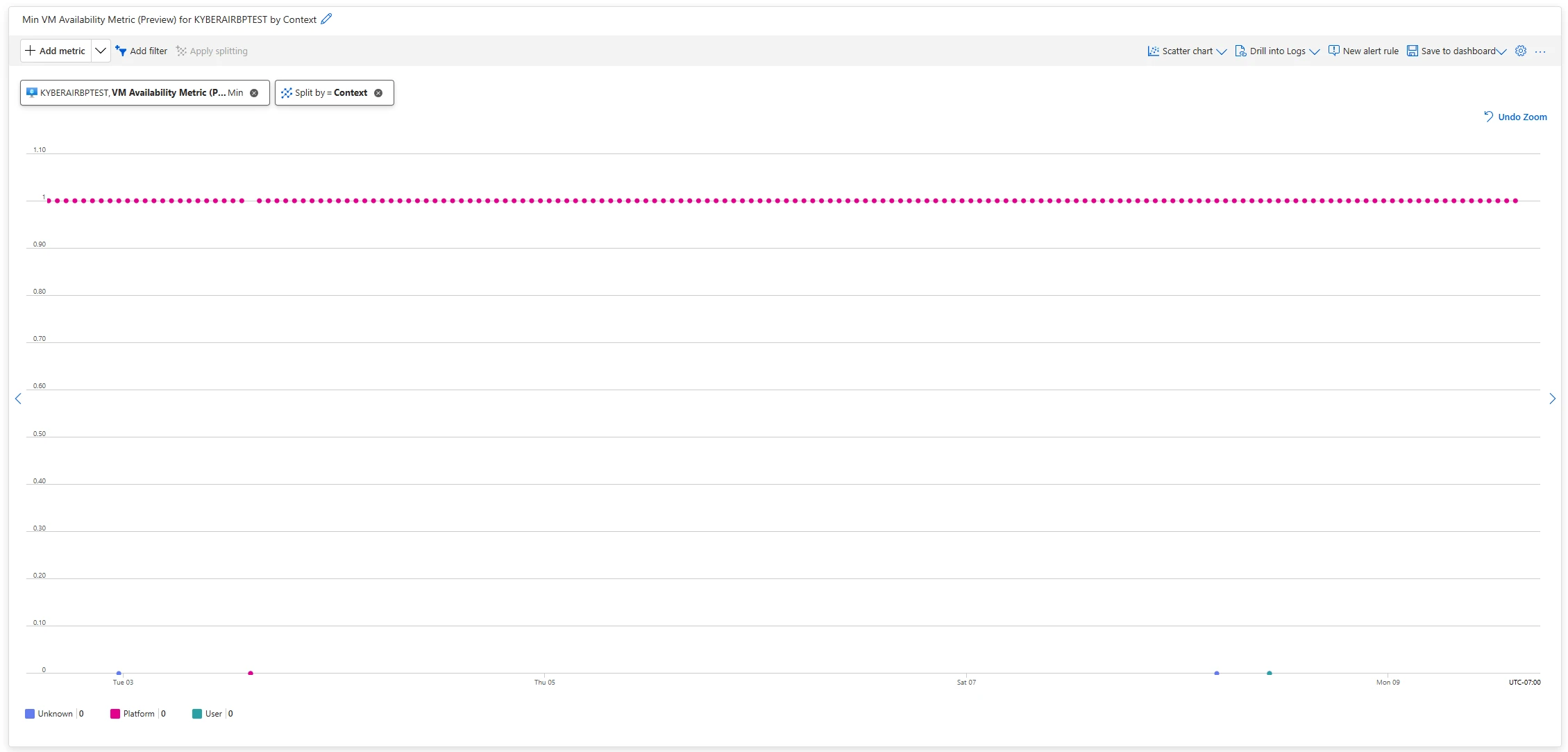 Figure 3: Context dimension
Figure 3: Context dimension
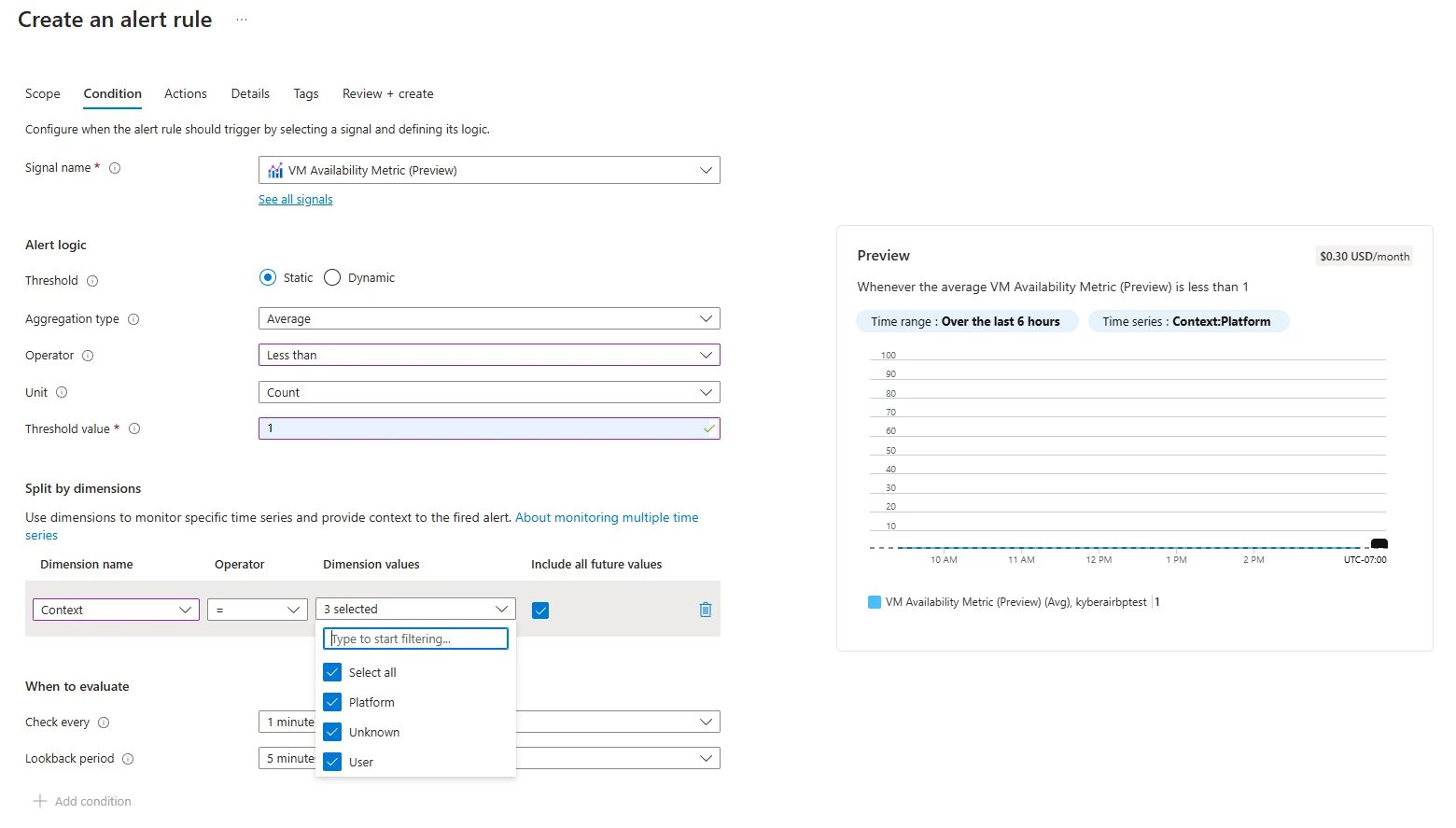 Figure 4: Azure Monitor alert rule
Figure 4: Azure Monitor alert rule
2. Azure Monitor Alerts Integration with Event Grid (Public Preview)
The integration of Azure Monitor alerts as event handlers to Azure Event Grid enables:
- Low-latency notifications for VM availability and health changes
- Multiple communication channels: SMS, email, push notifications, etc.
- Event-driven automation combining near real-time Event Grid delivery with Azure Monitor’s alerting
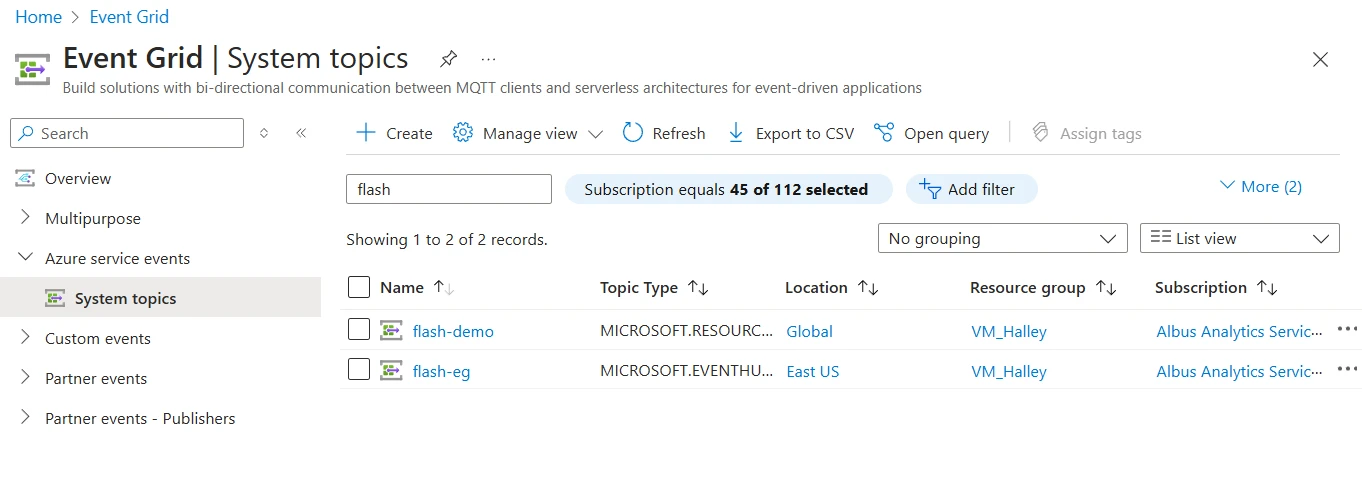 Figure 5: Event Grid system topics
Figure 5: Event Grid system topics
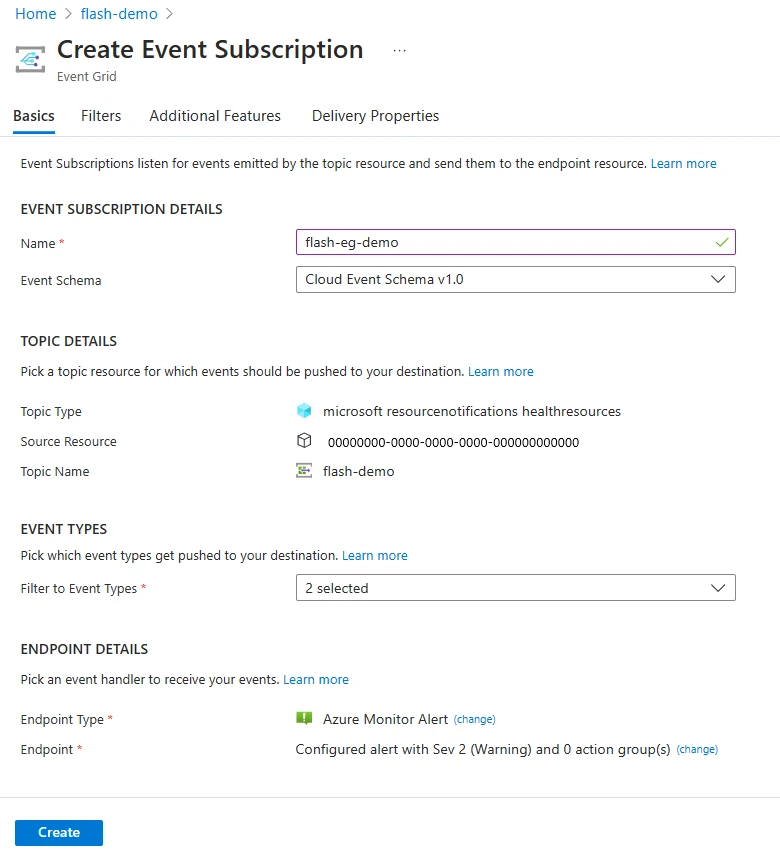 Figure 6: Event Grid subscription
Figure 6: Event Grid subscription
Getting started involves following step-by-step instructions to receive real-time VM health alerts via the Flash platform.
Looking Ahead
Future enhancements planned for Project Flash include:
- Monitoring scenarios such as inoperable top-of-rack switches, accelerated networking failures, and sophisticated hardware failure prediction
- Improvements to data quality and consistency across all Flash endpoints for more accurate downtime attribution and visibility
Recommended Approach:
- Use both Flash Health events (real-time insights and historical disruption logging) and Scheduled Events (for proactive, prioritized responses to planned maintenance and migrations).
- Flash Health: Real-time and historical VM disruption analysis, root cause, and downtime management
- Scheduled Events: Advance notice (up to 15 minutes) for upcoming maintenance or actions
Learn More
For details, visit the Project Flash documentation and follow updates on the Advancing Reliability blog series.
This post appeared first on “The Azure Blog”. Read the entire article here